COMMON TYPES OF GRINDING OPERATIONS
Grinding is one of the important metalworking methods in the mechanical industry. With the ability to create precise and high-gloss surfaces, grinding methods are widely applied in many fields from machinery and equipment manufacturing to consumer goods production. In this article, we will learn in detail about the most popular grinding methods today.
1. What is Grinding?
Grinding is the process of using abrasive tools, such as grinding stones or sandpaper, to remove a thin layer of material on the surface of the part. The purpose of this process is to achieve high precision in size, shape and surface gloss.
Grinding is often used in the final finishing stage to ensure that the parts meet technical and aesthetic standards.
2. Popular Grinding Methods
2.1. Flat Grinding
Flat grinding is the most common grinding method. This process uses the rotation speed of the grinding wheel to grind the flat surface of the part.

Applications:
• Machining parts such as metal plates, molds.
• Creating flat surfaces with high precision.
Advantages:
• High precision.
• The surface after machining has outstanding gloss.
Disadvantages:
• Processing time can be long for large parts.
• Requires modern machinery and high skills.
2.2. External Cylindrical Grinding
The external cylindrical grinding method is used to grind the outer surface of the cylindrical part
Process:
• The part is clamped tightly on a cylindrical grinding machine.
• The grinding wheel rotates rapidly and contacts the surface of the part, removing a thin layer of material.

Applications:
• Shafts, pipes, and cylindrical parts.
Advantages:
• Suitable for mass processing.
• Ensures uniformity and precision.
Disadvantages:
• Not suitable for parts that are too small or have complex shapes.
2.3. Internal Cylindrical Grinding
In contrast to external cylindrical grinding, internal cylindrical grinding is applied to grind the inner surfaces of the part, such as cylindrical holes.

Applications:
• Grinding holes of parts such as bearings, pipes.
Advantages:
• Ensure roundness and smoothness inside the part.
Disadvantages:
• Requires specialized equipment.
2.4. Centerless Grinding
Centerless grinding is a grinding method in which the workpiece does not need to be centered on the grinding machine.

Applications:
• Mass production of cylindrical parts, shafts, pipes.
Advantages:
• Increase productivity.
• Suitable for continuous machining.
Disadvantages:
• Difficult to achieve high precision for complex parts.
2.5. Using Sandpaper (Polishing)
This is a manual method, using sandpaper or grinding powder to finish the surface.

Applications:
• Create shine for basic details and items that do not require high precision.
• Remove small scratches.
Advantages:
• Easy to perform.
• Low cost.
Disadvantages:
• Not suitable for details that require high precision.
• Consumes labors.
3. Factors Affecting the Grinding Process
To achieve the highest efficiency when using grinding methods, the following factors need to be considered:
3.1. Grinding Wheel Quality
Grinding wheels are the decisive factor in grinding. Stones with high durability and good abrasive ability, material specifications are suitable for the application will help the machining process take place faster and more accurately.
3.2. Rotation Speed
The rotation speed of the grinding wheel directly affects the quality of the surface after grinding. Too high a speed can burn the surface of the part, while too low a speed will reduce productivity.
3.3. Technical Skills
The skill of the grinding machine operator greatly determines the accuracy and quality of the surface.
3.4. Type of Workpiece Materials
Depending on the type of workpiece material (steel, aluminum, stainless steel, etc.), choose the appropriate grinding method and grinding tool.
4. Advantages and Disadvantages of Grinding Processing Method
Advantages:
• High precision, achieving small tolerances.
• Creating a smooth surface.
• Suitable for many types of materials.
Disadvantages:
• High initial investment cost (machinery, grinding wheel).
• The machining process is time-consuming with large parts.
• Requires high skill and carefulness to avoid damage to the equipment.
5. Development Trends of Grinding Processing Method
With the development of technology, grinding processing methods are increasingly improved to meet the strict requirements of modern industry.
Some prominent trends include:
• Automation: CNC grinding machines with programming capabilities help increase accuracy and efficiency.
• New grinding materials: Using diamond grinding wheels, ceramic grinding wheels for superior durability and abrasion resistance.
• Green technology: Developing grinding methods that consume less energy and are environmentally friendly.
Conclusion
Grinding methods play an important role in improving product quality and production efficiency. Depending on the needs and technical characteristics, businesses can choose the appropriate method such as flat grinding, round grinding, or centerless grinding.
Correct application of grinding methods not only helps optimize the production process but also brings high added value to the product. If you are looking for precision machining solutions, carefully consider factors such as machinery, grinding tools and worker skills to achieve the best efficiency.
Tags: grinding methods, popular grinding methods, precision grinding






